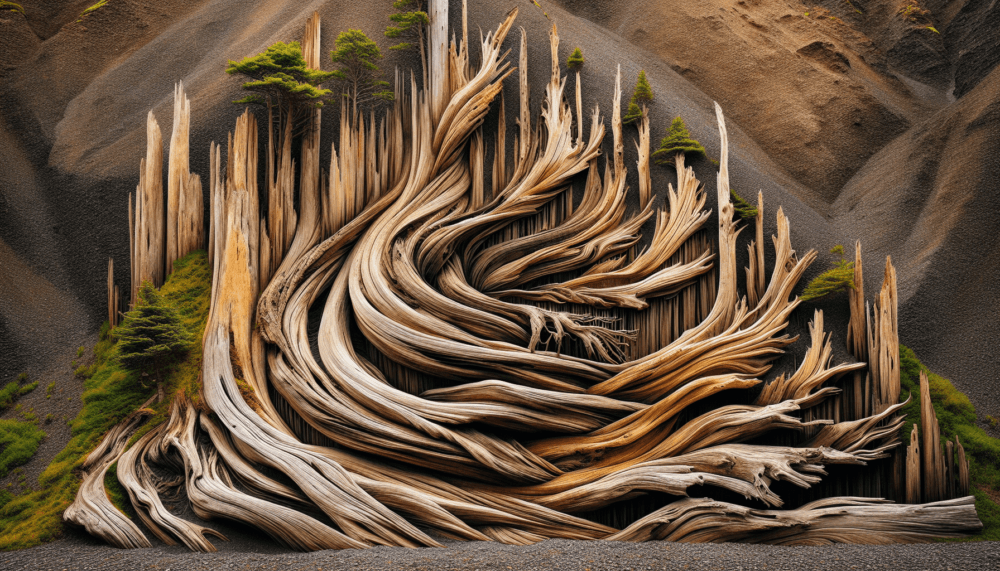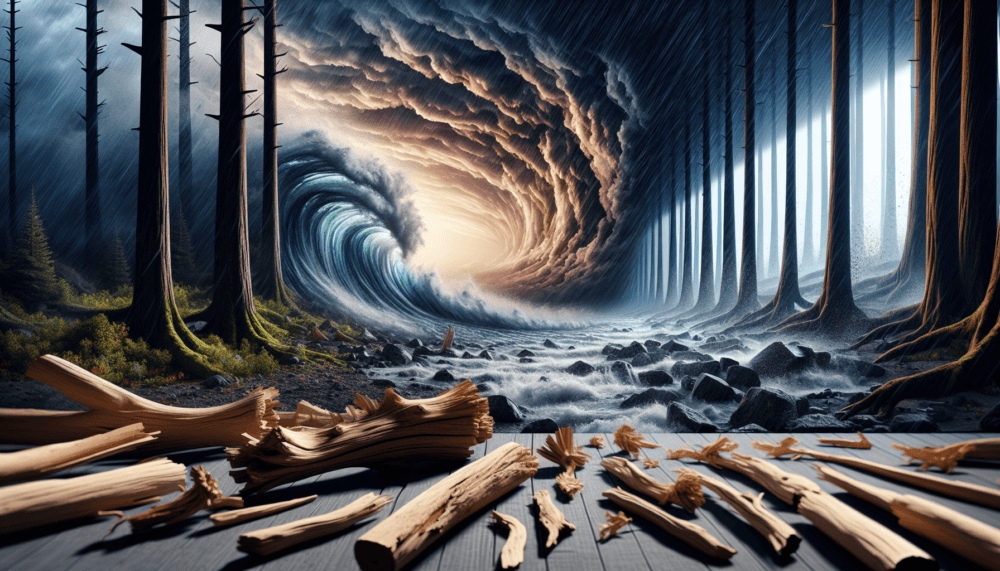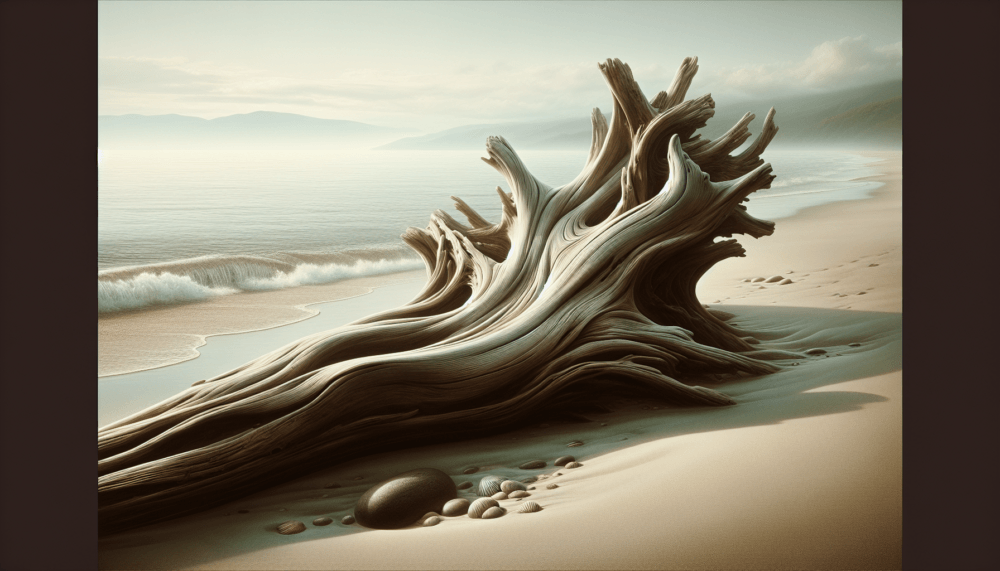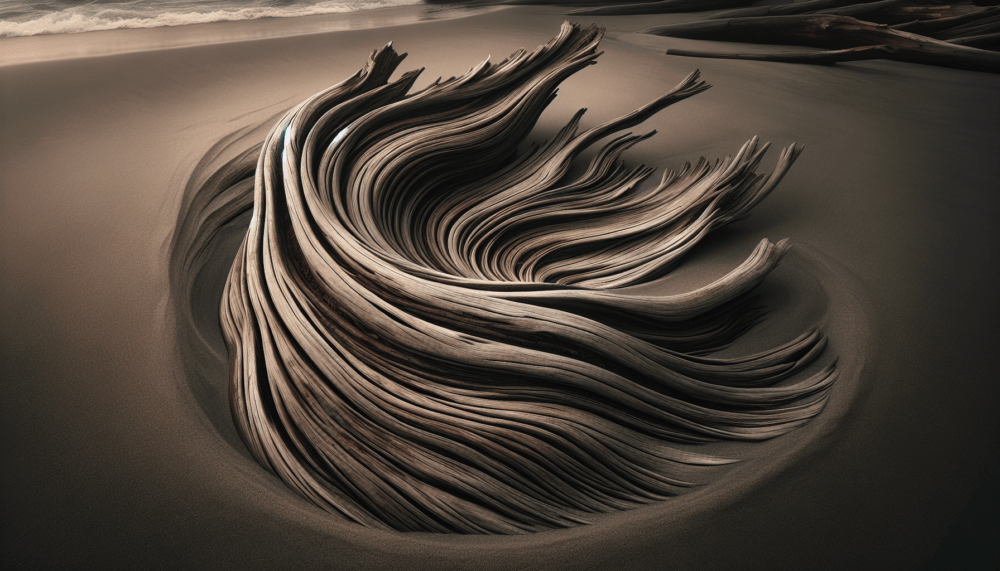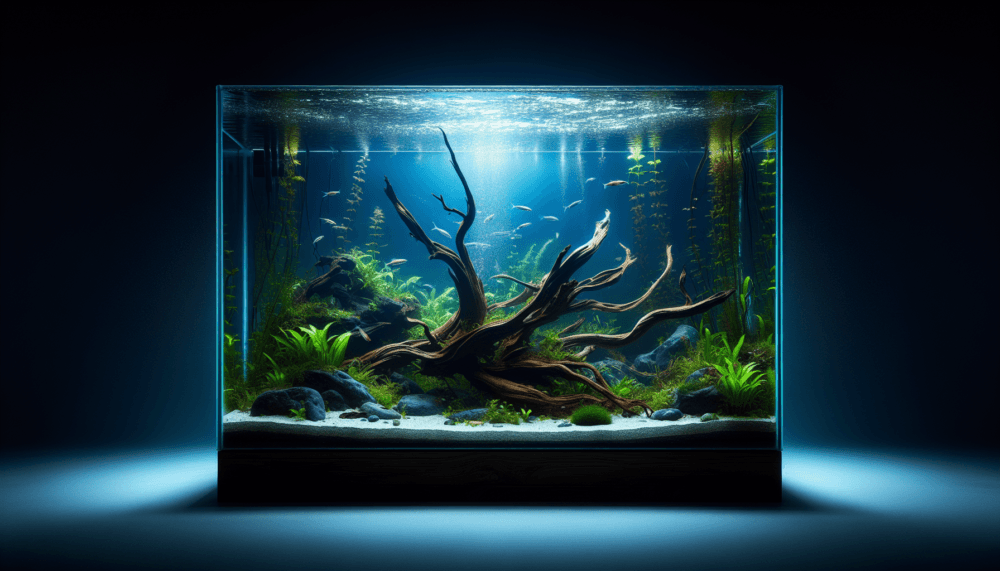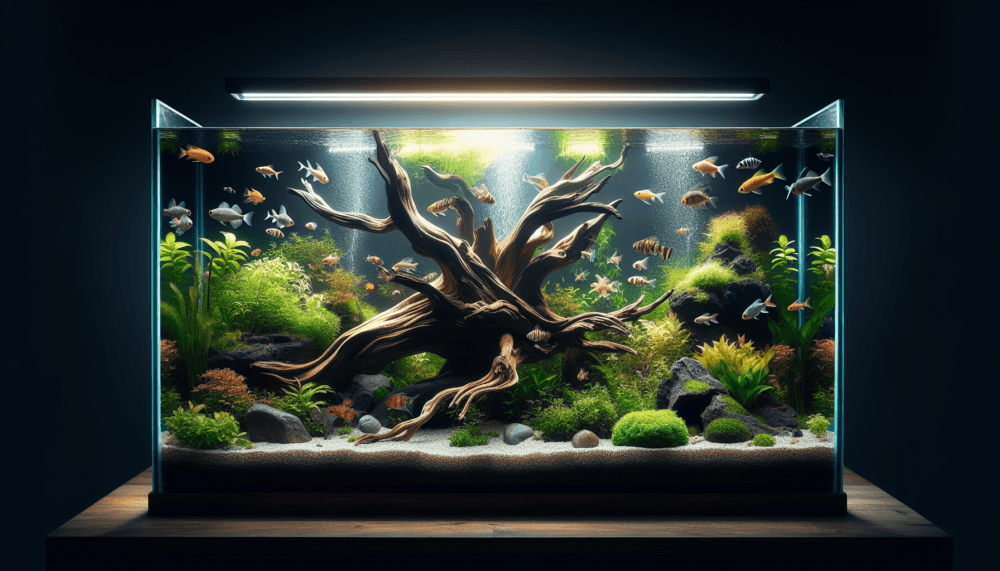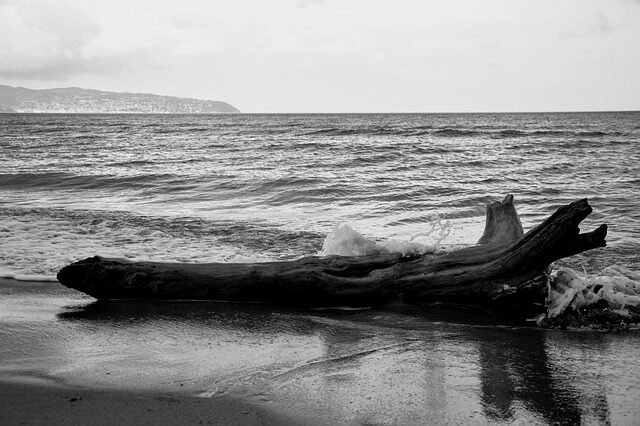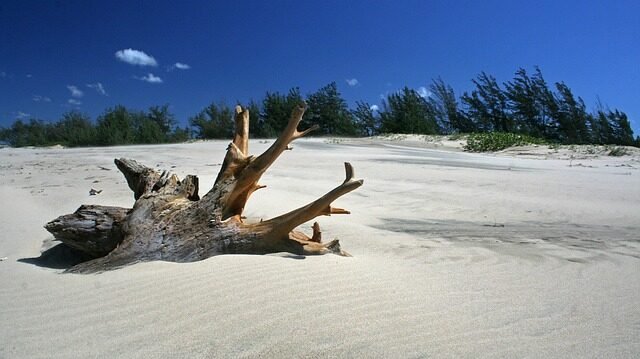Driftwood, with its weathered charm and unique textures, has long been a popular choice for both interior decor and outdoor landscaping. But have you ever wondered how long this seafaring wood can actually last? In this article, we will explore the lifespan of driftwood and unravel the fascinating journey of these sun-bleached treasures. From the factors that influence their longevity to tips on preserving their natural beauty, prepare to discover the secrets behind the enduring allure of driftwood. So, grab a cup of tea, settle in, and embark on this captivating exploration of “How Long Do Driftwood Last?”

Characteristics of Driftwood
Formation
Driftwood is a fascinating natural material that has its own unique characteristics. The formation of driftwood begins when trees near bodies of water, such as rivers or the coastline, get uprooted or fall due to natural events like storms or flooding. These trees are then carried away by the water, eventually reaching coastal areas or lakes where they become stranded or settle on the shoreline. Over time, exposure to the elements will shape and alter their appearance.
Shape and Size
Driftwood can come in a variety of sizes and shapes, ranging from small branches to massive logs. The shape of driftwood is influenced by the forces of nature, such as flowing water and waves, which gradually erode the wood, giving it a weathered and uneven appearance. Some driftwood may have interesting twists and knots, which add to its unique character, making each piece one-of-a-kind.
Texture and Color
The texture of driftwood can range from smooth and polished to rough and gnarled, depending on how long it has been submerged in water and exposed to various elements. The constant rubbing against sand, rocks, and other debris during its journey gives driftwood a distinct weathered texture. As for color, driftwood typically has smooth grayish or brownish tones, often with patches of lighter or darker shades. These colors are the result of the wood being bleached by the sun and water, creating a beautiful natural aesthetic.
Factors Affecting Driftwood Lifespan
Exposure to Elements
One of the key factors that can influence the lifespan of driftwood is its exposure to the elements. Constant exposure to sunlight, wind, rain, and saltwater can accelerate the decay and deterioration of driftwood. The harsh elements can cause the wood to warp, crack, and lose its structural integrity over time.
Water Conditions
The type of water that driftwood is submerged in can also impact its lifespan. In marine environments, where the water contains high levels of salt, driftwood tends to deteriorate at a faster rate compared to freshwater environments. The saltwater can leach out the natural oils and resins within the wood, making it more susceptible to decay and rot.
Biological Activity
Biological activity also plays a role in the decay of driftwood. Microorganisms, such as bacteria and fungi, feed on the organic matter present in the wood, breaking it down over time. Wood-boring insects, like termites and marine woodworms, can also accelerate the decay process by burrowing into the wood and causing structural damage. The more active the biological activity, the shorter the lifespan of the driftwood.
Driftwood Decay Processes
Biodegradation
Biodegradation is a natural process in which organic materials, such as driftwood, are broken down and recycled by microorganisms. Bacteria and fungi play a crucial role in decomposing the wood, breaking down its cellulose and lignin components. This process helps return nutrients to the ecosystem and allows new life to thrive. However, the rate of biodegradation varies depending on environmental factors, wood species, and other conditions.
Chemical Weathering
Chemical weathering is another decay process that can contribute to the breakdown of driftwood. Exposure to water, oxygen, and various chemicals in the environment can cause the wood to undergo chemical reactions, leading to the deterioration of its structure. Factors such as acidity, alkalinity, and the presence of pollutants can influence the speed at which chemical weathering occurs.
Factors Influencing Driftwood Decay
Wood Species
The type of wood species greatly influences the decay and longevity of driftwood. Some wood species, like cedar and redwood, have natural oils and resins that act as a protective barrier against decay-causing agents. These species are more resistant to rot and can last longer compared to others. On the other hand, softwoods like pine or spruce are more prone to decay due to their higher moisture content and lack of natural preservatives.
Density and Porosity
The density and porosity of the wood also play a role in its susceptibility to decay. Dense hardwoods, such as oak or mahogany, have a higher resistance to moisture absorption, making them less prone to rotting. Similarly, less porous wood tends to be more durable and resistant to decay compared to highly porous wood.
Wood Treatment
Wood that has undergone treatment, such as pressure treatment or chemical preservation, can have an extended lifespan compared to untreated driftwood. These treatments introduce chemicals into the wood, making it more resistant to decay and insect infestation. However, it’s essential to note that treated wood should not be used for certain purposes, like aquariums or vivariums, as the chemicals can be harmful to aquatic life.

Longevity of Driftwood in Different Environments
Marine Environments
In marine environments, where driftwood is constantly exposed to saltwater and strong waves, its lifespan tends to be relatively shorter. The high salt content in seawater accelerates the decay processes, causing the wood to deteriorate at a faster rate compared to other environments. However, some hardwood species, such as teak or mahogany, can withstand the harsh marine conditions and can last longer in these environments.
Freshwater Environments
Driftwood submerged in freshwater environments generally has a longer lifespan compared to marine environments. The lower salt content in freshwater slows down decay processes and provides a less harsh environment for the wood. In lakes, rivers, and ponds, driftwood can remain intact for several years, serving as valuable habitats and shelter for aquatic organisms.
Terrestrial Environments
Driftwood that washes ashore in terrestrial environments, such as beaches or forested areas, can last for many years or even decades if not exposed to excessive moisture or extreme weather conditions. In these environments, the wood is primarily affected by weathering processes like erosion, wind, and solar radiation. Well-preserved driftwood can be an exciting discovery for beachcombers, nature enthusiasts, and artists alike.
Uses and Benefits of Driftwood
Decorative Purposes
Driftwood is widely sought after for its decorative appeal. Its unique shapes, textures, and colors make it a popular choice for home decor and interior design. Driftwood can be used to create beautiful centerpieces, wall art, sculptures, and even furniture. Its natural aesthetic adds a touch of coastal charm to any space, bringing a sense of tranquility and beauty.
Aquariums and Vivariums
Driftwood is also highly valued in the world of aquariums and vivariums. Its natural tannins, released into the water, can create a beautiful amber hue and mimic the natural environment of many fish and reptiles. Driftwood provides hiding spots, climbing surfaces, and naturalistic elements to the aquatic or terrestrial habitats, thus enhancing the well-being and behavior of the animals.
Functional Applications
Apart from its decorative and habitat-enhancing uses, driftwood can also be utilized for functional purposes. Its weathered and durable nature makes it suitable for various outdoor applications, such as fencing, pathway borders, and garden furniture. Driftwood can also be used as firewood, as long as it is completely dried and free of any residual salt or chemicals.
Preserving and Caring for Driftwood
Cleaning Procedures
Before using driftwood for any decorative or functional purposes, it is crucial to clean and remove any debris or harmful substances it may have collected during its journey. This can be done by gently scrubbing the wood with a soft brush and water. If necessary, a mild detergent or bleach solution can be used to disinfect and remove any stubborn stains. It’s important to thoroughly rinse the driftwood afterward to ensure no residue remains.
Drying Techniques
To prevent further decay and preserve driftwood, it should be properly dried before use. This can be achieved by placing the driftwood in a well-ventilated area and allowing it to air dry naturally. It may take several weeks or even months, depending on the size and moisture content of the wood. The drying process ensures that the driftwood reaches a stable moisture content, making it less susceptible to decay.
Sealing and Treating
For long-term preservation, driftwood can be sealed and treated with appropriate products. Applying wood sealants or wood preservatives helps protect the wood against moisture, UV damage, and insect infestation. However, it’s essential to use products that are safe for the intended use of the driftwood. For example, if using driftwood in an aquarium, it should be treated with non-toxic sealants or non-harmful finishes that won’t harm aquatic life.
Creative Projects with Driftwood
DIY Home Decor
Driftwood can be a treasure trove for DIY enthusiasts. Its unique shapes and textures lend themselves well to various home decor projects. From a simple driftwood centerpiece for a dining table to intricate wall hangings and sculptures, there are endless possibilities for incorporating driftwood into your home decor. Its natural beauty and rustic charm can add a touch of coastal or bohemian style to any living space.
Crafts for Kids
Driftwood offers a plethora of crafting opportunities for children. From using smaller pieces to create jewelry like necklaces and bracelets to crafting driftwood boats or fairy houses, children can let their creativity run wild with this versatile material. Driftwood can be painted, decorated with beads or shells, and transformed into whimsical characters or nature-inspired art pieces, providing hours of imaginative fun.
Outdoor Art Installations
Driftwood can also be used to create stunning outdoor art installations. From large-scale sculptures to temporary land art, driftwood offers a unique artistic medium that blends harmoniously with nature. Land artists and environmental sculptors often use driftwood to create intricate and thought-provoking installations on beaches, parks, and other natural landscapes, allowing the audience to connect with the beauty and transience of the environment.
Driftwood Conservation and Environmental Impact
Sustainable Harvesting
When selecting driftwood for decorative or functional purposes, it is important to ensure it has been sustainably harvested. Driftwood should ideally be collected from areas where it is naturally abundant, such as shorelines or riverbanks, rather than actively cutting down live trees. Sustainable harvesting helps preserve the natural habitats and ecosystems while also ensuring the availability of driftwood for future generations.
Preserving Natural Habitats
Driftwood plays a significant role in creating and sustaining natural habitats along coastlines, rivers, and lakes. It provides shelter, nesting sites, and feeding areas for various organisms, from insects and birds to fish and crustaceans. Preserving the natural habitats where driftwood accumulates is essential for the overall health and biodiversity of these ecosystems.
Raising Awareness
Another important aspect of driftwood conservation is raising awareness about its environmental significance. By educating people about the importance of preserving natural habitats, sustainable harvesting practices, and the impact of human activities on coastal ecosystems, we can foster a sense of responsibility and encourage individuals to make environmentally conscious choices.
Conclusion
Driftwood, with its unique characteristics and rich history, holds a special place in both nature and human culture. From its formation through forces of nature to its eventual decay and transformation, driftwood serves as a testament to the ever-changing beauty of the natural world. Its longevity in different environments, versatility in various purposes, and potential for creative projects make it a truly remarkable material. By understanding the factors that affect driftwood’s lifespan, preserving its natural habitats, and promoting responsible harvesting practices, we can ensure the preservation of this fascinating natural resource for generations to come. So, the next time you come across a piece of driftwood on the beach or riverbank, take a moment to appreciate its unique beauty and consider how it can bring a touch of nature’s artistry into your own life.






